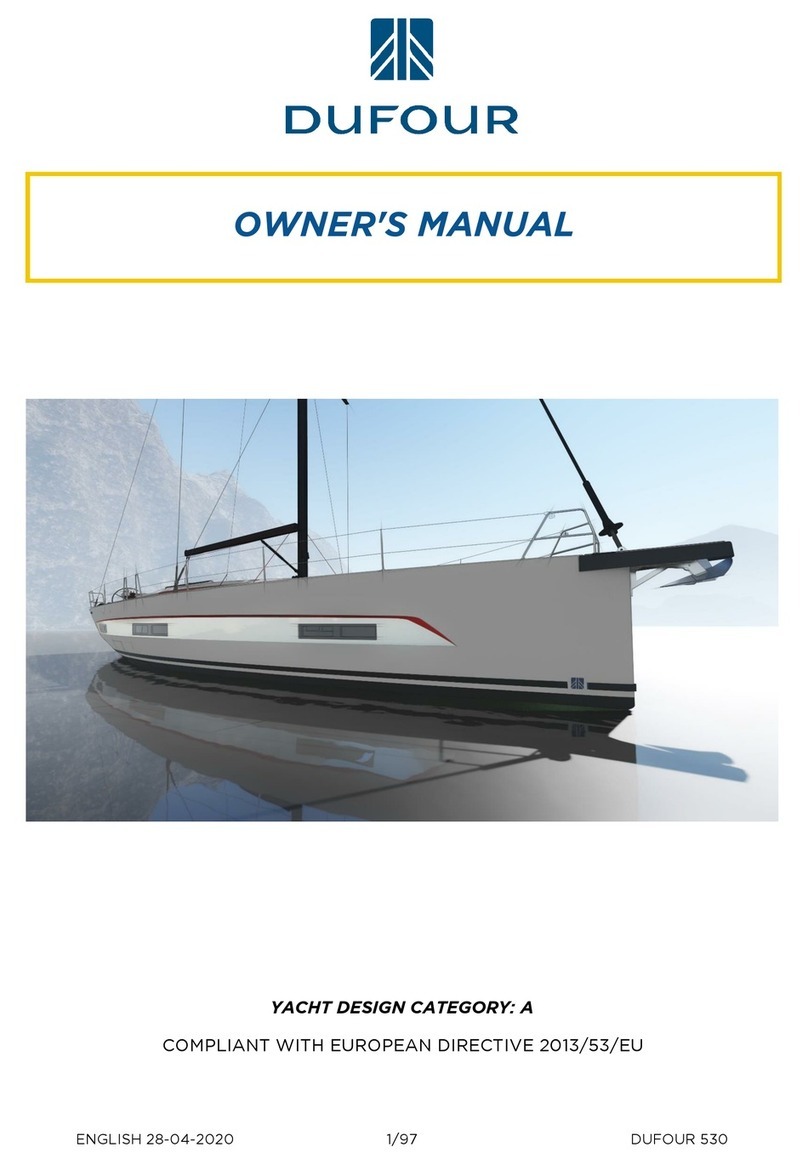5
DY CAT 48
INTRODUCTION
DUFOUR CATAMARANS is pleased to present this manual that will allow you to learn more about
your boat. This manual has been developed to help you use your boat safely and with pleasure. It
contains details about the boat, the equipment supplied or installed and its systems, as well as the
information about their use. Read it carefully and familiarize yourself with the boat before using it.
This owner's manual is not a course on the safety of navigation or the marine sense. If this boat is
your first boat or if you have changed it to a type of boat with which you are not familiar, for your
comfort and safety, be sure to gain experience on its manoeuvre and use before taking the
Commands. Your dealer, your national sailing Federation or powerboating or your yacht club will be
happy to inform you about the relevant sailing schools or instructors in the region.
Make sure that the wind and sea conditions are in line with the design category of your boat, and
that you and your crew are able to manoeuvre the boat under these conditions. Even when your
boat is adapted to it, the sea and wind conditions corresponding to the design categories A, B and
C vary from heavy storm for category A to severe conditions for the top of category C, subject to the
dangers of waves or gusts and anomalies, and are therefore dangerous conditions, in which only an
experienced crew, in good shape, and trained, maneuvering a well-maintained boat can navigate
satisfactorily. This owner's manual is not a detailed maintenance or repair guide. In case of difficulty
use the builder of the boat or his representative. If a service manual is provided, use it.
Always use the services of an experienced professional for maintenance, installation of accessories
or modifications. Modifications that may affect the safety characteristics of the vessel shall be
assessed, carried out, and documented by competent persons. The builder of the boat cannot be
held responsible for any changes that he would not have approved. In some countries a driver's
licence or authorisation is required or specific regulations are in force. Always properlymaintain your
boat and consider the deterioration that results from time or, if applicable, significant or improper
use. Any boat, however solid it may be, can be severely damaged if it is not used properly. This is
not compatible with safe navigation. Always adjust the speed and direction of the boat to the sea
conditions.
If your boat is equipped with a life raft, read the user manual carefully. The crew should have on
board all the safety equipment (lifejackets, harness, etc....) corresponding to the type of boat, the
weather conditions, distance from the coast, etc…. This material is mandatory in some countries.
The crew should be familiar with the use of all safety equipment and with emergency safety
manoeuvres (recovery of a man at sea, towing, etc.); sailing schools and clubs regularly organize
training sessions. It is recommended that all persons carry appropriate flotation aids (lifejackets,
personal flotation aid equipment) when they are on deck. It should be noted that in some countries
it is compulsory to wear flotation aid in accordance with national regulations all the time.
































